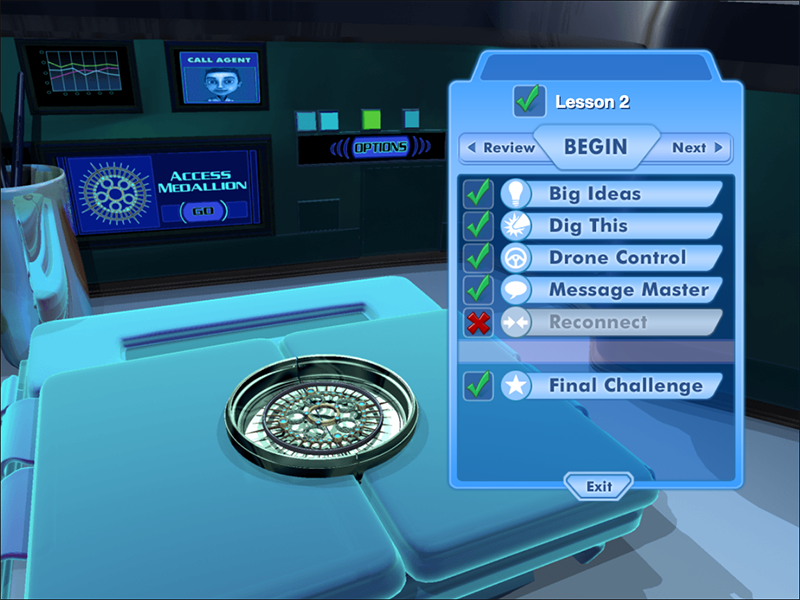

Generalization- DTT gets a pretty bad rap when it comes to.
#Type to learn 3 trial trial#
Taking so much data, I’d suggest collecting first trial data or doing a weekly Cold Probe. If you don’t like data collection or want to avoid Impossible to determine progress and make programming decisions without Important as making sure data is collected. Sheet used can range from very simple to complex. Is writing down how the child performed at the task. As the child is contacting their reinforcement, the therapist Data Collection- Data collection for a DTT trial is done afterĮach trial.To transition the child away from external/adult mediated reinforcement as soon as possible, and increase naturally occurring/social reinforcement. Or ice cream because that’s all the child likes. Reinforcers is because very young children or children new to ABA oftenĭon’t find social interaction, adult attention, or toys/games reinforcing.įor those children, the therapists use things like candy, chips, The reason why so many DTT sessions use food Many people ask me if DTT sessions have to use food treats. Tickle the child for maybe 4 seconds, and then continue Reinforcer is tickles, then don’t tickle the child for 5 minutes after oneĬorrect answer. Should be varied, rotated often, and given in small amounts. The chips should be opened and placed into a bowl or onĪ plate for easy access), yet out of reach of the child. Reinforcement must be easily accessible and ready (a bag of unopened chips The schedule of reinforcement you use will depend on the child. Reinforcement schedule, only some correct answers contact reinforcement. With a continuous or dense reinforcement schedule,Įvery correct answer contacts reinforcement. Reinforcement being given, the child may be reinforced hundreds of time inĪ therapy session.

Reinforcement- Reinforcement is a critical part of any ABA.Reinforcement that increases the likelihood that the child will respond The SD tells the child what you want them to do, and theirĬorrect response is how they contact reinforcement. “Show me your nose” that could be confusing to the child, and could slowĭown learning. Therapist says “Touch your nose” and the afternoon therapist is saying The SD mustīe consistent across time, therapists, and settings. If the child doesn’t respond correctly, I provide prompting. If the child does the response correctly, I provide reinforcement. I say to a child “Touch your nose” there is a specific response I want theĬhild to do. With DTT, the SD leads to a specific desired response. Examples of SD’s include: “Touch your nose/Stand up/What number? SD-> Response- The SD is simply the instruction or demand you present to theĬhild.Mixed trials although with some children they may need the repetition of Typically you want to transition from mass trialing to Would look like this: “Trial 1: Touch dog…Trial 2: Give me red…Trial 3: When you teach targets in a random order and do not use repetition. Mixed trialing, also called random rotation, is Photo of a brown dog, the 2 nd trial the child touches a photo ofĪ white dog, and so on. Some programs add in generalization at this step by changing the Teach very young children, children new to ABA, or lower functioningĬhildren. That would look like this: “Trial 1: Touch dog…TrialĢ: Touch dog….Trial 3: Touch dog”. Trial simply means you are asking the target multiple times in a Level of the child, you would teach using “mass” or “mixed” trials.

Mixed Trials - Depending on the ability and functioning On a particular skill for weeks, it probably needs to be broken down Progress determine how far to break down the skill. Or, your client may need even more steps. It might not take that many steps for yourĬlient to learn to write his name. The goal when using a DTT approach is to break down the skill as muchĪs is necessary for the child. Over time the therapist would remove her assistance until theĬhild can independently write his name. Therapist provides letter prompting (therapist says as child writes Finally, theĬhild is given paper and pencil and told “Write your name”, as the “Adam”, first they learn to individually trace “A”, then “d”, and so on.Īfter tracing, they learn to write each letter individually. For a child with Autism, learning to write their So what is considered a complex skill? Well,


 0 kommentar(er)
0 kommentar(er)
